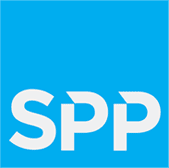Insights
Insights Series: What does the NAPLAN data really show us?


Continuity of learning is the key driver of student success, new analysis by SPP has shown
Students who study at a combined (P-12) school are less likely to be distracted by transition between primary and secondary years and are able to continue learning at the same momentum without major disruption. This was found to be a more reliable driver of ongoing student success than many other factors, such as school funding, school demographic profiles and class sizes.
SPP examined a NAPLAN dataset that tracked improvement in results of the same cohort of students between 2012 (Year 7) and in 2014 (Year 9) to explore how effective individual schools are in supporting academic growth. The exploration of this dataset is a more representative measure of school performance than raw scores, as it allows us to understand how a school supports its students to improve over time.
Our analysis data revealed several key issues for educators to consider.
Changing schools disrupts the learning momentum of students
| “How do we recognise the positives in the state’s education system; We are preparing a primary school cohort well, but not for secondary or senior school.”“Departments of Education need to consider how best to raise connectivity between schools, and cohorts within schools, in order to maximise likelihood of student success.”– Ben Apted, SPP Partner and Education Lead |
Transitioning from primary to secondary schools can be a difficult adjustment, as students grapple with a new physical and learning environment, new friends and new routines. This can disrupt their momentum and distract them academically. Students who attend a combined school, where they remain at the same school across primary and secondary years, remain in a familiar environment, retain many existing friendships and work with teachers who are already familiar with their academic needs. They are less likely to be distracted by transition and continue learning without major disruption.
Our findings are consistent with a report by the Centre for Education Statistics and Evaluation in NSW (CESE), which found that changing schools has a more detrimental impact on educational outcomes than all other factors.
In light of these findings, there are some key questions and discussions for educators to consider. For example, are we brave enough to do a complete overhaul of our current system to improve continuity between schools? Are primary-only and secondary-only schools exchanging enough data about students to help minimise these transition issues? What continuity does the system offer between (a) curriculum approach; (b) location and (c) school itself? What can be done to improve one or all of these approaches?
Raw NAPLAN scores alone are often a poor measure of a school’s effectiveness
The data shows that average NAPLAN results vary greatly between sectors; independent and catholic schools have higher average results than government schools, and there are also major differences between the states and territories. But research has shown that differences in student demographic profiles are a key driver of this outcome, and it is therefore essential to look deeper than the raw results to determine a school’s effectiveness.
| “Statistically, there is always going to be spectrum of ability on a bell curve, and we need to respect this. The value of education is not in the mad scramble to get everyone on the right side of the curve, but in empowering each child to realise their full potential.”– Yixin Li, SPP Consultant and Data Lead |
The academic improvement delivered by a school (relative to those with similar commencing NAPLAN scores) is a more representative measure of how well an individual school will support a child’s academic development.
The NAPLAN results don’t have all the answers
While the data set can provide some insights into the effectiveness of a particular school in supporting academic growth, a range of other factors should be considered when choosing a school (such as cost, location, religious or other affiliations, teaching philosophy, school culture and access to extra-curricular activities).
Ben says, “Education is the great opportunity for all, so when we look at NAPLAN data, the fundamental question we should all be asking is how do we empower each student to maximise their growth potential.”
Widget: Improvement Index, Combined vs Secondary-Only Schools (SPP, 2017)
SPP Insights Series is a regular update delivering ongoing recommendations on education sector issues based on our data analysis, industry trends and our deep sector expertise.
Key Contacts
Ben Apted / Senior Partner
Ben Apted is the Senior Partner of SPP. Ben leads SPP's Education, Research and Digital Practices. Ben is a thought leader and contributor nationally and internationally on higher education strategy, engagement and operations. He has led transformation of government service...
Connect on email
Connect on LinkedIn

